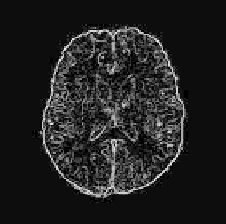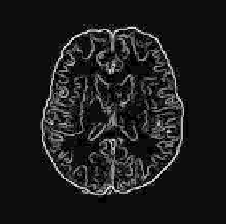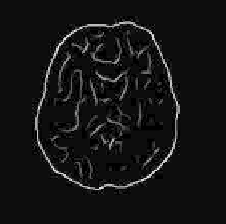Biomedical Engineering Reference
In-Depth Information
(a)
(b)
(c)
(d)
(e)
Figure 6.24:
Example of a multiscale edge detection method finding local max-
ima of wavelet modulus, with a first-derivative wavelet function. (a) Input image
and (b)-(e) multiscale edge map at expansion scale 1 to 4.
and [92]. In [93], both cross-scale edge correlations and spatial continuity were
investigated to improve the edge detection in the presence of noise. Wilson
et al.
in [94] also suggested that a multiresolution Markov model can be used to track
boundary curves of objects from a multiscale expansion using a generalized
wavelet transform.
Given their robustness and natural representation as boundary information
within a multiresolution representation, multiscale edges have been used in
deformable model methods to provide a more reliable constraint on the model
deformation
{
Yoshida, 1997 #3686; de Rivaz, 2000 #3687; Wu, 2000 #3688; Sun,
2003 #3689
}
, as an alternative to traditional gradient-based edge map. In [99], it
was used as a presegmentation step in order to find the markers that are used
by watershed transform.
6.4.3 Other Wavelet-Based Segmentation
One important feature of wavelet transform is its ability to provide a repre-
sentation of the image data in a multiresolution fashion. Such hierarchical





